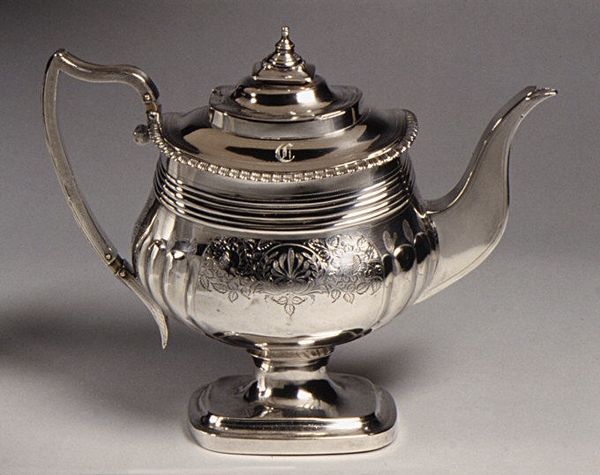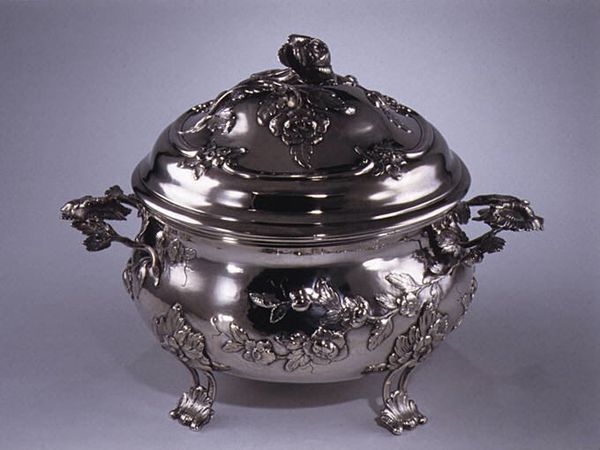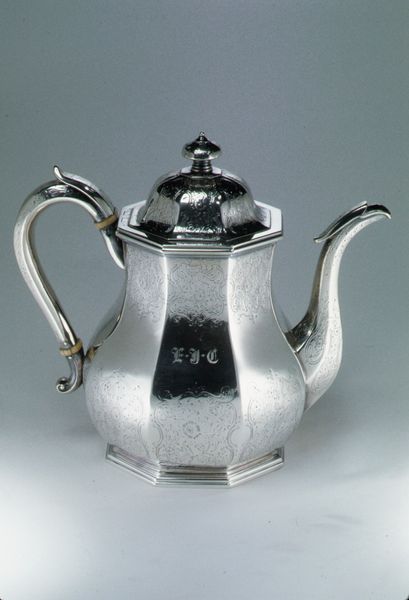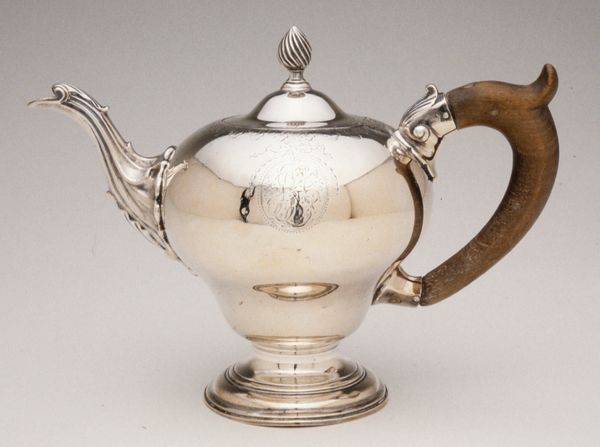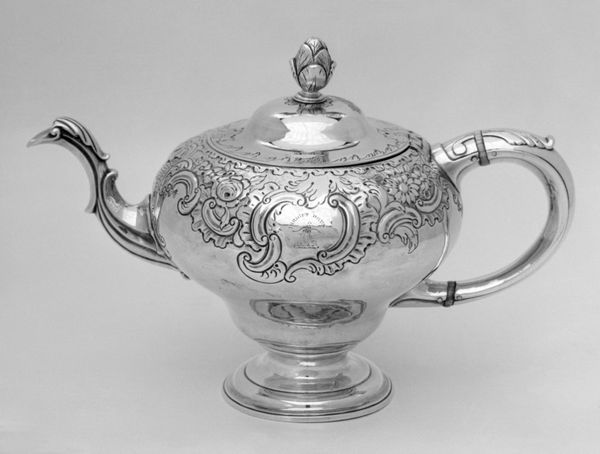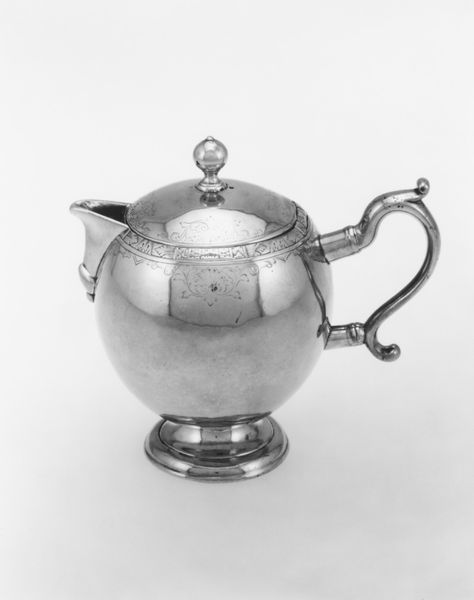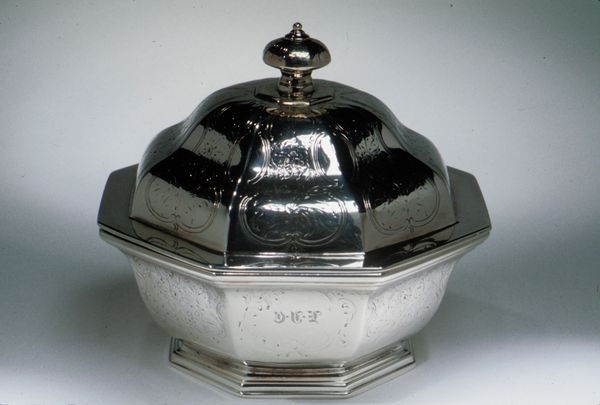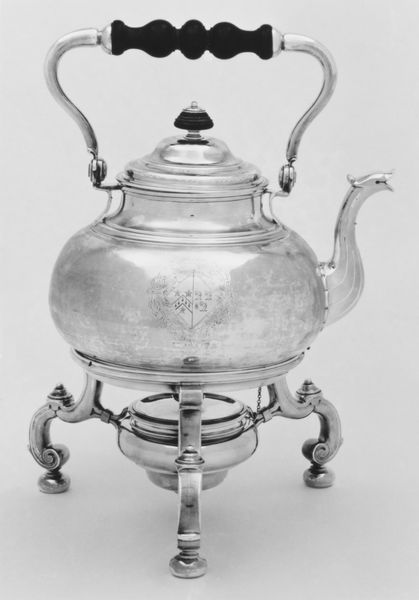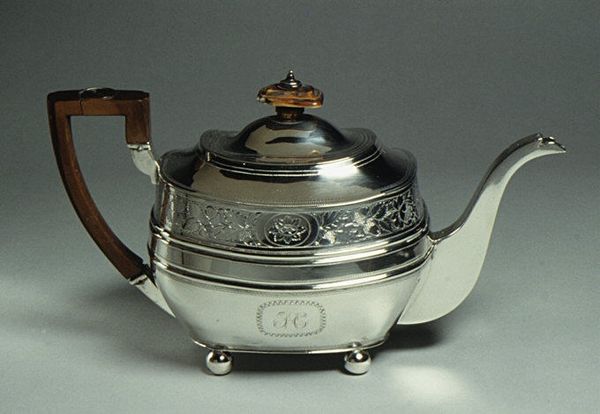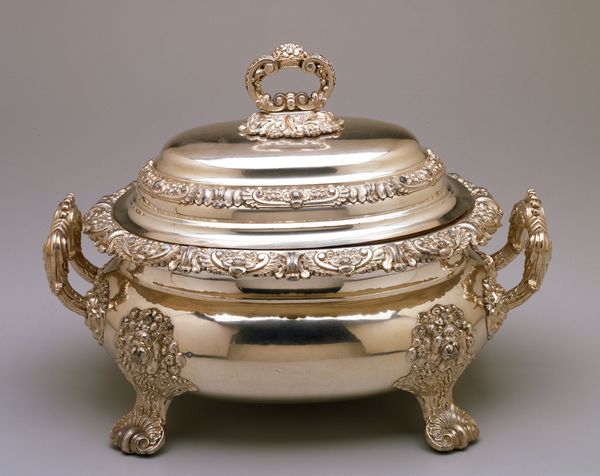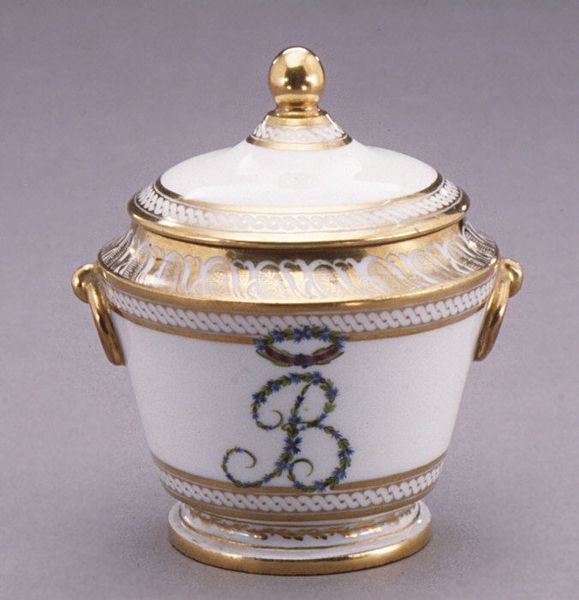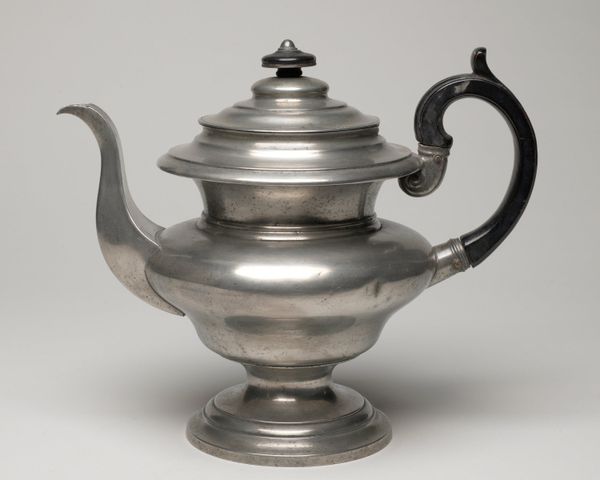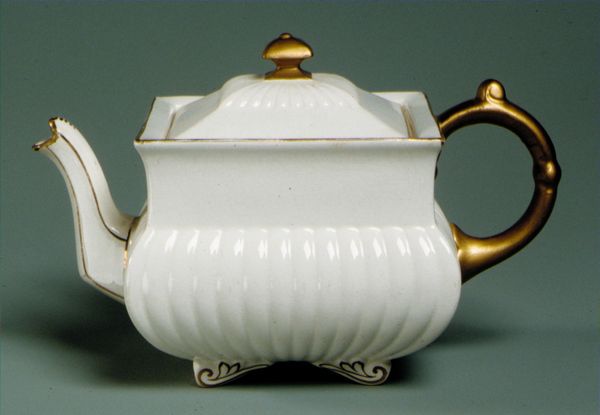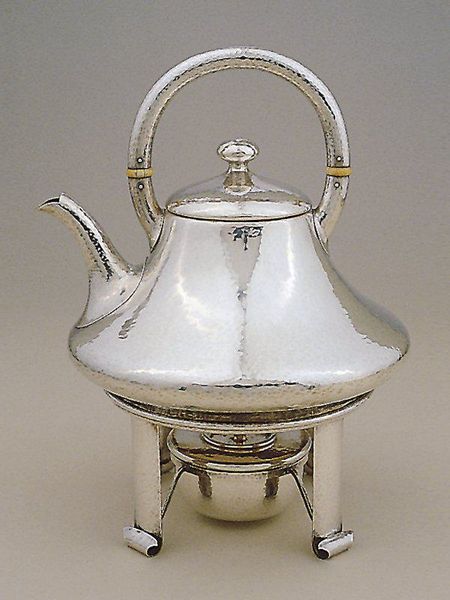
silver, metal, sculpture
#
neoclacissism
#
silver
#
metal
#
stoneware
#
sculpture
#
ceramic
#
decorative-art
Dimensions: Overall: 5 9/16 x 7 x 4 15/16 in. (14.1 x 17.8 x 12.5 cm); 20 oz. 18 dwt. (650.2 g) Base: H. 3 11/16 in. (9.4 cm) Body: 3 7/16 in. (8.7 cm); 14 oz. 7 dwt. (445.7 g) Cover: 2 1/4 x 5 1/4 in. (5.7 x 13.3 cm); 6 oz. 12 dwt. (204.5 g)
Copyright: Public Domain
Curator: This striking object, a Sugar Bowl made of silver, dates to somewhere between 1835 and 1840. It can be found here at the Metropolitan Museum. The creator’s mark identifies William Forbes. Editor: It's wonderfully opulent. My immediate feeling is the sheer weight of its design seems to embody the power dynamics embedded in sugar production itself. The scale and luster hint at the exploitation that fueled such displays of wealth. Curator: Yes, there’s an interesting visual dialogue happening here. The overall shape is rigidly geometric—the strong lines and the clear symmetry speaks to Neoclassical ideals of order and reason. Yet the engraved decoration hints at a more romantic sensibility. Do you think that the “EJC” monogram suggests any deeper meaning? Editor: Absolutely. The presence of initials indicates ownership, inscribing an individual's identity and privilege directly onto the object. It represents not only personal wealth but also highlights the societal structures that enabled it, obscuring a deeper history linked to sugar and enslavement. We can’t forget that sugar fuelled global trade imbalances. Curator: We also see visual cues to status, like its complex engraving patterns which are symbols that echo throughout art history, often signifying abundance or family crests that act as subtle, recognizable codes of belonging. Do you agree that they amplify its social meaning? Editor: Agreed. Each curve, flourish, and carefully placed initial solidifies the narrative of power. While appearing to represent elegance, it simultaneously symbolizes the brutal underpinnings of economic structures that benefited a select few. It would be interesting to view this with other artefacts to fully visualise that narrative. Curator: Reflecting on this "Sugar Bowl," its symbols serve as silent reminders of a complex cultural past. Editor: Exactly. Hopefully its visibility might spur dialogues about the historical relationships between luxury and exploitation.
Comments
No comments
Be the first to comment and join the conversation on the ultimate creative platform.
